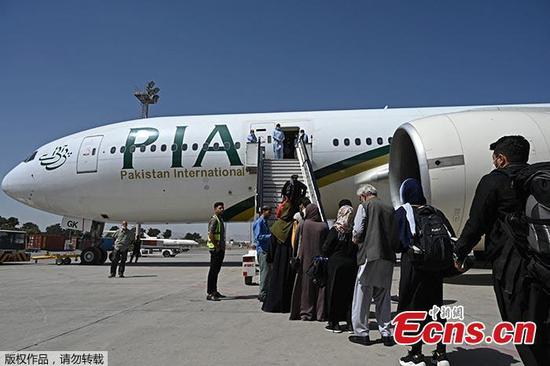
Customs officials verify documentation of a container ship in Ningbo, Zhejiang province. (YAO FENG/FOR CHINA DAILY)
China will support the orderly opening of cargo airports, and explore and implement trials for transshipment of international containers and consolidation services at key seaports during its 14th Five-Year Plan period (2021-25), said a senior Customs official on Thursday.
At a news conference in Beijing, Dang Yingjie, deputy director-general of the National Office of Port Administration at the General Administration of Customs, elaborated on the implementation details of the country's port growth plan during the 2021-25 period.
The government will create a cargo airport service network with reasonable layout and complementary functions to meet the nation's new development pattern and promote the growth of the Belt and Road Initiative, she said.
Airports with low goods and passenger traffic volume will be shut. The expansion of 10 international hubs such as Beijing and Shanghai, and 29 regional hubs like Tianjin and Shenyang between 2021 and 2025 will be supported. The opening of non-hub airports and dual-use airports will be strictly controlled. And other cities will be encouraged to make use of hub airports to achieve aggregation effect, she said.
Apart from improving regulations for personnel, goods and means of transport at pilot free trade zones and free trade ports, the government will enhance the cross-border infrastructure interconnection projects at key land ports between China and countries like Russia, Vietnam and Myanmar.
The government will also further promote the integrated development of the five major port clusters in the Bohai-Rim region, the Yangtze River Delta region, the Guangdong-Hong Kong-Macao Greater Bay Area, and southeast and southwest coastal regions. It will speed up integrated Customs clearance operations and further enhance the global competitiveness of key shipping ports.
Under the plan, China will support the opening of international passenger and cargo routes at existing ports in the inland areas that meet the stipulated conditions. The country will add import ports for vehicles, pharmaceutical products and other products in inland locations. Besides, it will increase Customs supervision sites as needed to further reinforce the efficiency of port operations.
The number of ports approved by the State Council, China's Cabinet, reached 313 by the end of the 13th Five-Year Plan period (2016-20). The volume of import and export goods passing through Chinese ports was 22.19 billion metric tons, with total value of 146.37 trillion yuan ($22.7 trillion), over the past five years, Customs data showed.
Dang said the GAC will implement a fast Customs clearance model for entry and exit of cross-border freight train services, and gradually expand pilot projects such as the introduction of more digital tools at land ports with mature conditions.
There will be coordinated construction, and sharing of inspection facilities and equipment at ports in the next stage. The government will build special lines for railway logistics bases at certain ports. It will also accelerate the construction of railway depots and stations at major hubs for China-Europe freight train services.
The higher-level opening-up at Chinese ports and booming China-Europe Railway Express freight train services will be vital in promoting China's new dual-circulation development pattern and stabilizing global logistics and supply chains in the coming years, said Zhang Yongjun, deputy chief economist at the Beijing-based China Center for International Economic Exchanges.

















































